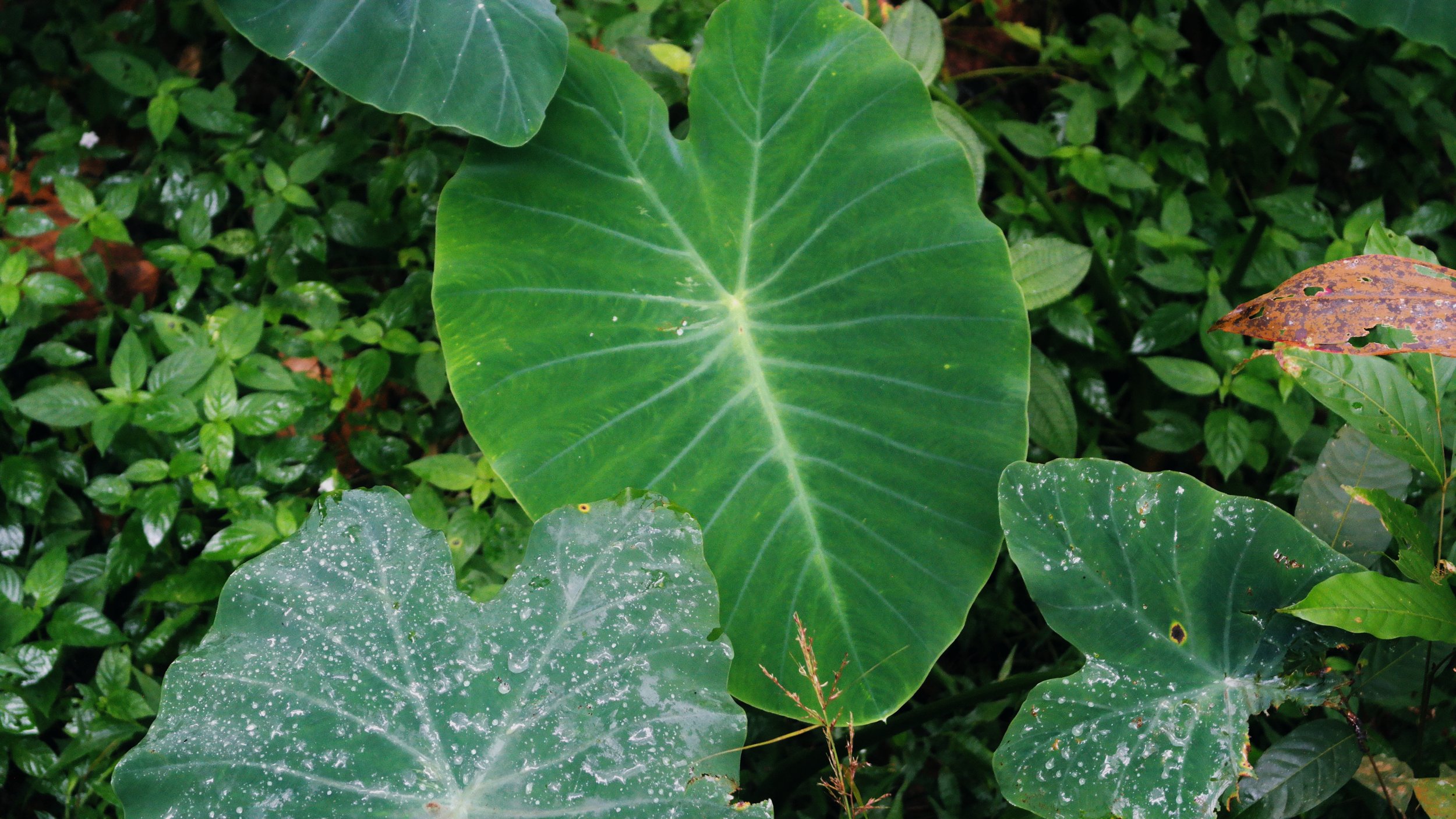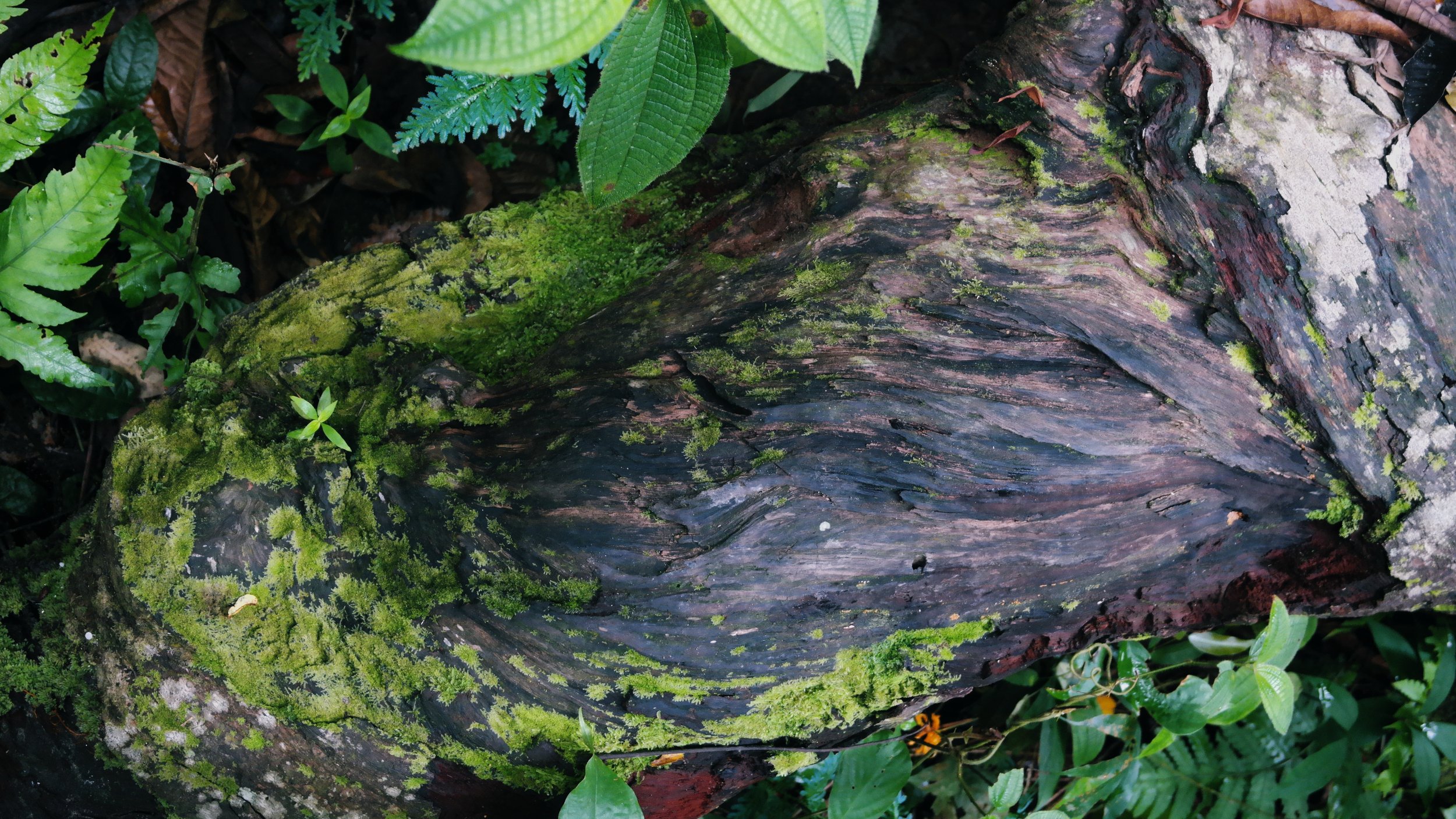
SIGHTS AND SOUNDS
AN ILLUSTRATED GUIDE TO FOREST PLANTS
Syarifah Nadhirah
MALAYSIA
In 2020 the PARDICOLOR Creative Arts Fund supported Syarifah Nadhirah (otherwise known as Dee Alyahya), an artist and illustrator based in Kuala Lumpur, Malaysia. In this feature we share an excerpt of Syarifah’s project ‘Sights and Sounds: An Illustrated Guide to Forest Plants’ which takes us on an exploration of ethnobotany in Gombak, a secondary forest located in the periphery of Selangor, bordering the state of Pahang. In the wider context Syarifah’s project addresses human ecology and in her own words: “The inability of external parties to see traditional resources as a necessity to the wellbeing of Orang Asli [Malay for “Original People”] often leads to destructive approaches in land management, leaving them out of the equation.” Syarifah’s practical research was guided by Raman, a Semai (an Orang Asli society) originally from Cameron Highlands, Pahang who shared his ancestral knowledge “greet[ing] every plant he knew by heart along the dwindling path and patiently [teaching] me what they were for.” (Syarifah Nadhirah).
All writings, photography and watercolours by Syarifah Nadhirah.
To experience more of Syarifah’s project you can visit her website.
“When hiking in the forests, it's quite challenging to capture certain plants through watercolour painting on the spot. I would usually sketch the plants in my sketchbook with a pen or pencil. At the same time, I will snap photos of the plants and bring back some leaf or seed samples, not the whole plant. I would study the plants up close according to the photos and the samples I collected.”
Sketches from Gombak Forest excursion.
A Fallen Balau Tree.
“The forests and the soil represent specific ecological niches and are inextricably linked to the Orang Asli identity where both generate their traditions and worldview, all depending on their rapport to a particular land.”
Amischotolype griffithii
Other name: Tabar (Semai), Setawar, Setawar tebu, Tebu gogok
Endemic to the Peninsular Malaysia (H. N. Ridley 1907), Tabar grows immensely either along the cold streams, partially submerged in the water or lying low on the damp forest floor. It is known that the umbut of this plant, though quite difficult to obtain, carries drinkable water that is good to treat stomach ache and fever. Its stem has a similar appearance to that of Tebu (Sugarcane) — hence the generic name Setawar Tebu — although much softer and the mucilage from the stem is used to neutralize poison from snake bites. Refer video by Walkabout Asia on Jungle Herbs (6:28 - 7:42), as narrated by Haji Sazilan.However, as a Semai Indigenous like Raman himself, he would look for this plant for its young shoots. He recalled back in the day, “Dulu masa anak saya kecil, saya suka bawa dia cari umbut pokok ini”, Translation: Back when my children were younger, I enjoyed bringing them along to find the young shoots of this plant. He would remove the skins on the umbut and squeeze the water out to drink.
Reference: Duistermaat H., 2012. A taxonomic revision of Amischotolype (Commelinaceae) in Asia, p. 26-27.
Etlingera coccinea
Local names: Tepus
Tepus poses a beautiful long pink-green hued pithy stalk and bright red flowers with yellow margins only found on the ground, and often pollinated by smaller birds. It very much resembles its twin sister, Kantan (Etlingera elatior) in size and appearance. Though tall in nature with shoots growing up to 7 metres high, it also bears edible fruits that taste sweet and sour. The umbut (young stalk) is the much rather popular edible part of the plant, which is a common vegetable eaten by the people of Sabah and Sarawak — often consumed raw or cooked in delicious sambal dishes. In Borneo, it is more commonly known as Tuhau.
On the other hand, the fruits — the much lesser known component of the plant — contain tiny black and oily seeds that exude a strong fragrant smell, enticing those nearby. Raman mentioned that the Orang Asli community here eat the fruits that are either concealed underground or half-buried in soil.
Foraging [with Raman].
“Little streams paved in between thick foliage and small rocks as we made our way deeper.”
Donax grandis
Local names: Bemban
Bemban leaves are customarily used as rice wrappers when cooking food in bamboo, particularly due to its glossy and sturdy broad leaves. The surface area is enough to carry the weight of rice without leaking or tearing, most of the time. Once placed in the bamboo stalk, they would fill it with water and place the bamboo near a fire to cook the rice inside. There you have it, a natural rice cooker.
In a different setting in Kampung Pulau Kempas, the Temuan women mentioned that the ubik (rhizomes) is not only edible, but can also be mashed and made into cooling powder or as natural relievers for itchiness and skin blisters. In the olden days especially during war times, the Orang Asli women often made these during their free time.
“Bemban ini isi ubi dia, tumbuk-tumbuk boleh buat jadi bedak sejuk..”, Translation: The Bemban rhizomes can be mashed to make a cooling powder paste; casually explained by Lopo, a Temuan elder, over the verandah.
Refer to this video crafted by the Orang Asli youth on Bemban.
Phyllanthus amarus
Other names: Retmet (Semai), Dukung anak
Commonly mistaken with the Semalu, this small herb is extremely lightweight and the thin green branches bear two rows of oval-shaped leaves, usually accompanied with tiny green coloured fruits on the middle of the stem. He went on to explain that traditionally, the roots of the plant are boiled in a water bath and it can be used to treat jaundice in newborn babies.
“The wisdom of nature goes hand in hand with the Orang Asli’s worldview, as they navigate their lives exposed to the unforgiving tropical climate, witnessing growth and decay, changes in the landscape — even the slightest — giving birth to a pool of precise adaptation of indigenous knowledge which some may even be still hidden from scientific discovery.”
This is an excerpt from Syarifah Nadhirah’s project, Sights and Sounds. Go to www.syarifahnadhirah.com/sights-and-sounds to see more.
“Di lembah ini, memang banyak sumber makanan tapi makin susah nak cari sekarang,”
“There are plenty of food sources in this valley, but it is getting harder to find them nowadays.” - Raman









